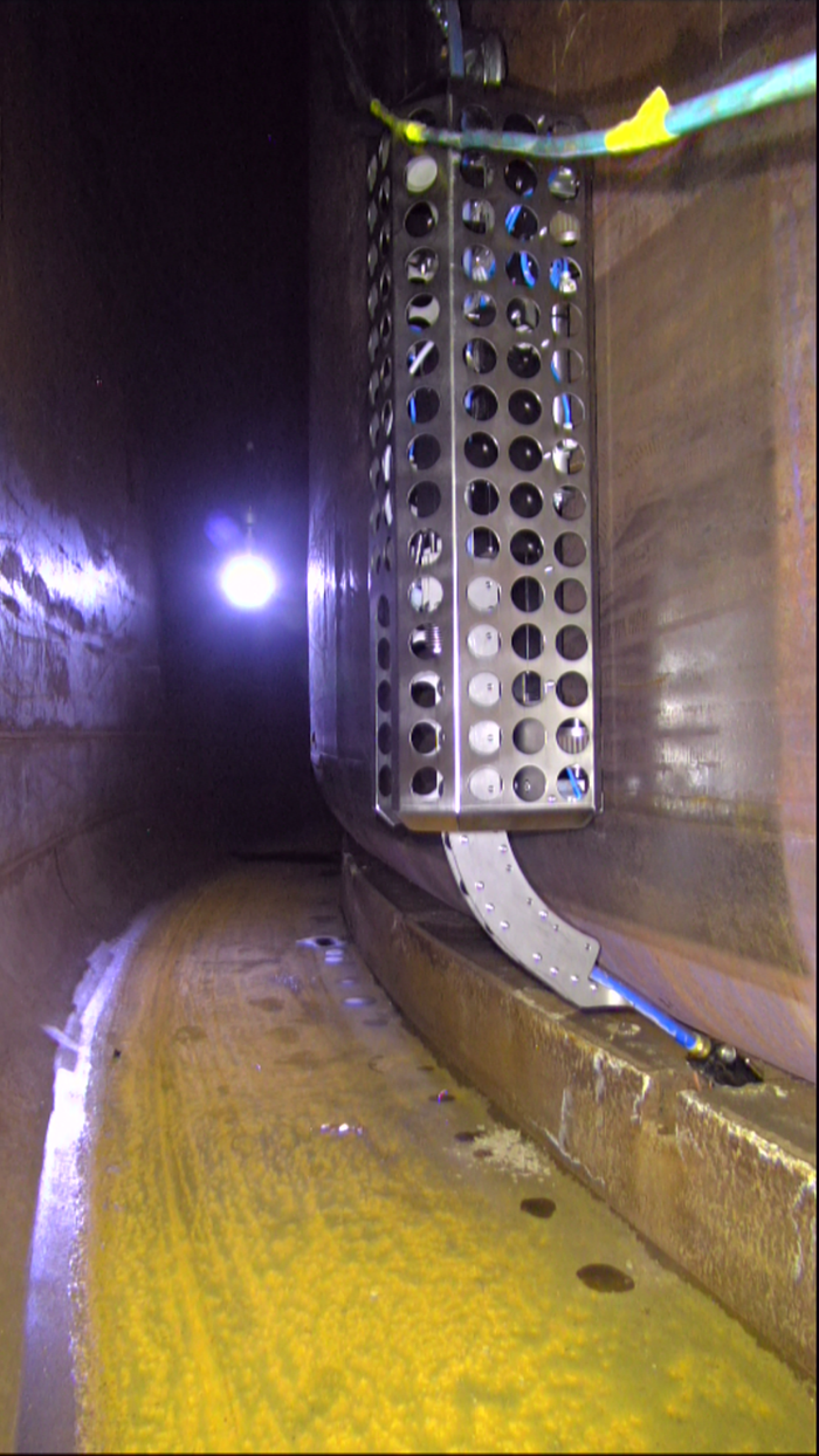EM's Office of River Protection used an innovative robotic system that employs ultrasonic sound waves to help engineers detect and mitigate corrosion.
Office of Environmental Management
March 10, 2020
RICHLAND, Wash. – EM’s Office of River Protection and tank operations contractor Washington River Protection Solutions recently used an innovative robotic system that employs ultrasonic sound waves to help engineers detect and mitigate corrosion of Hanford Site waste storage tanks.
The system features a small, remotely operated “crawler” that fits in air channels about the width of a cell phone underneath the inner shell of double-shell storage tanks. The system sends out ultrasonic sound waves to detect flaws in the tank’s carbon steel and gives engineers a look at spaces that haven’t been seen in decades.
“The achievement is monumental in that it allows periodic and reliable thickness measurements of the bottom of the inner tanks,” said Dustin Stewart, a program manager for DOE’s Tank Farms division. “Knowing the condition of the tanks is essential to our mission of safely storing waste and providing waste for treatment.”
While the contractor has long used ultrasonic testing to examine the walls of double-shell tanks, the ability to access the bottom of a primary tank has been a significant challenge, because the primary tank rests on an insulating pad within the secondary tank liner.
To perform the test, the project team used a first-of-a-kind system that features a crawler to insert the testing sensor into air slots beneath the tanks. The wedge-shaped air slots are challenging to deploy the sensors into because they are only 2 ½ inches wide at the top, 1 inch wide at the bottom and 2 ½ inches high.
“The technology used here is based on proven systems used in industry,” said Washington River Protection Solutions engineer Jason Gunter. “We’ve become experts in adapting those systems to enable access and inspection in unique and challenging areas.”
Stewart said DOE is committed to developing and implementing new technologies that advance the Hanford cleanup mission and reduce the risk to the Columbia River that runs through the site in southeastern Washington State.

